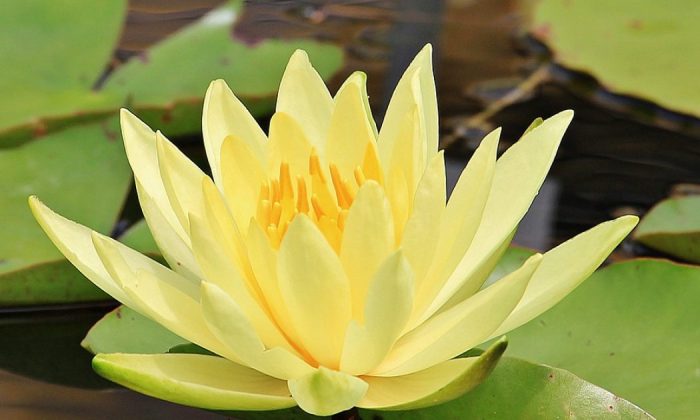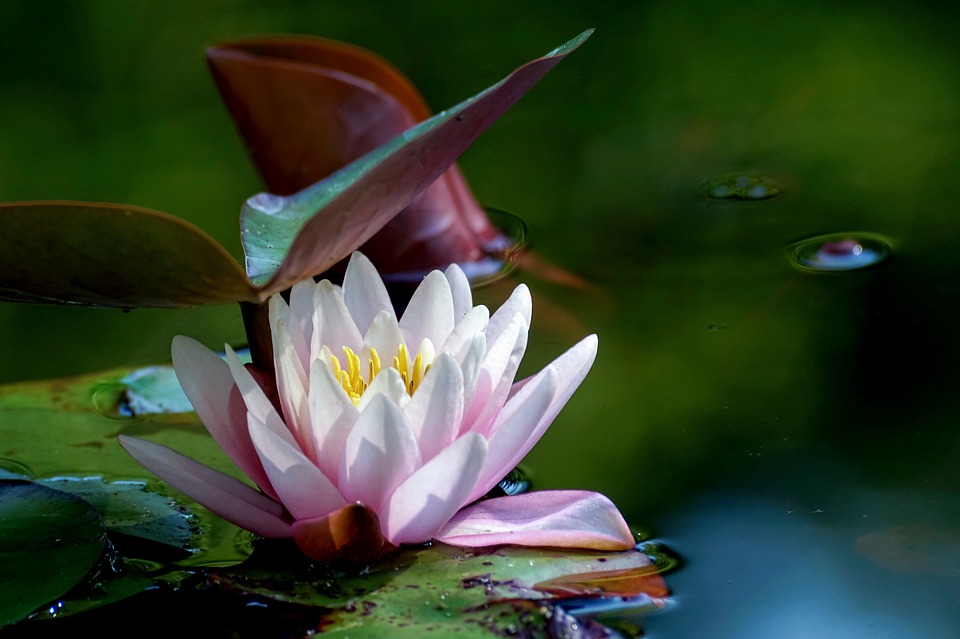Water lily and its rootstocks.

Water lilies (Nymphaea) open during the day and close at night. We all know these beautiful and rather exotic aquatic plants. Water lilies are one of the most popular flowers that we grow in ponds or other bodies of water. Even small children know water lilies, because they are often found in parks of various castles. Growing is not hard, which is probably another reason why water lilies are so popular. But how should we care for water lilies in the winter? Well, they do require special care, but if you do it correctly, you will certainly enjoy the beauty of water lilies year after year.
Crossbreeding water lilies
Water lilies, as we know them today, were created by long-term crossing between several botanical species (American, European and Asian wild plants). The typical colour of water lily is white, but today hybrids also produce red, pink or even yellow flowers . A Frenchman Joseph Bory Latour was the first who intentionally began growing water lilies in the 19th century.
Photo: Pixabay
Types of water lilies
Water lilies are divided according to the type of rhizomes they produce, and which affect how they need to be planted, usually in a growing container. These include:
- “Running rootstock” – this is not exactly a botanical name, but we shall explain what we mean by that. This type of rhizome is created by crossing Nymphaea odorata and Nymphaea tuberosa. In good conditions, it can grow for up to half a meter in one season. Because of this rapid growth you should definitely choose the largest possible container, ideally a plastic one. Plant rhizomes with the cut part to the edge of the container to give the rhizome enough space to grow. Transplant once every two years. As soon as the plant outgrows the container it begins to suffer and you need to transplant it.
- Compact rhizome – you don’t need to transplant this rhizome as often because it grows slower and it often branches out. The vast majority of modern cultivars are of this type.
- Mexicana – these are rhizomes of a subtropical water lily called Nymphaea mexicana. This water lily has been used to breed new frost-resistant varieties that grow in Europe and usually produce yellow flowers.
- Erect rhizome – also called pineapple rhizome. These rhizomes grow even slower and are typical for dwarf water lilies. You need to transplant it from time to time (for example if you notice that your water lily is not doing as good as it should). If you transplanting, cut rhizomes below and plant them deeper in the substrate.
Growing water lilies
Water lilies are planted in containers. It is very important to provide a substrate that is rich in nutrients and if you cannot get such soil you need to fertilize.
When placing water lilies in your pond, select a deeper section in the back of the pond . If you also have fish in your pond, cover the surface of containers with boulders of suitable size. Before planting you need to know what type of rhizome you have and whether it grows quickly or slowly. Based on that, you should choose the most suitable container.
Preview photo: Pixabay

Gardening is my hobby, I have a lot of experience and I am happy to share it.









0 comments